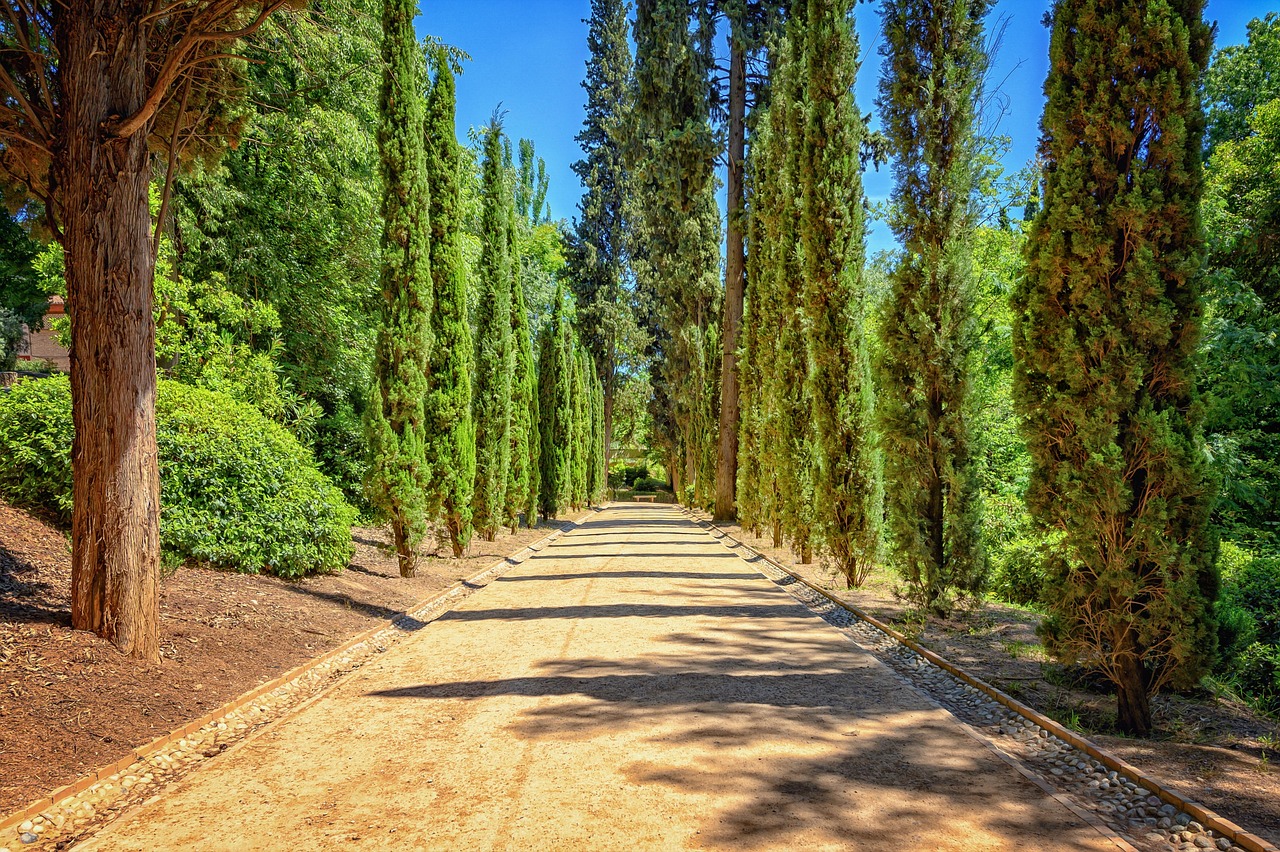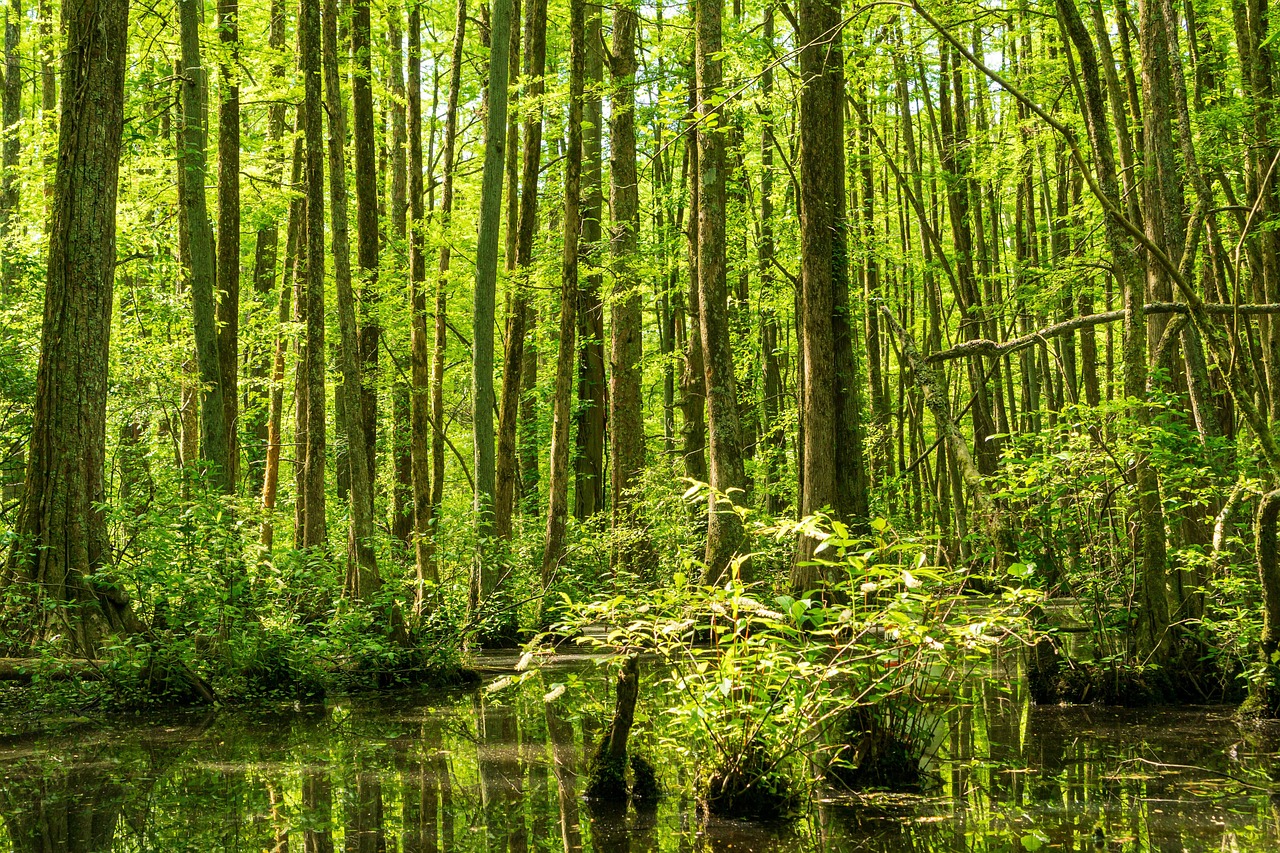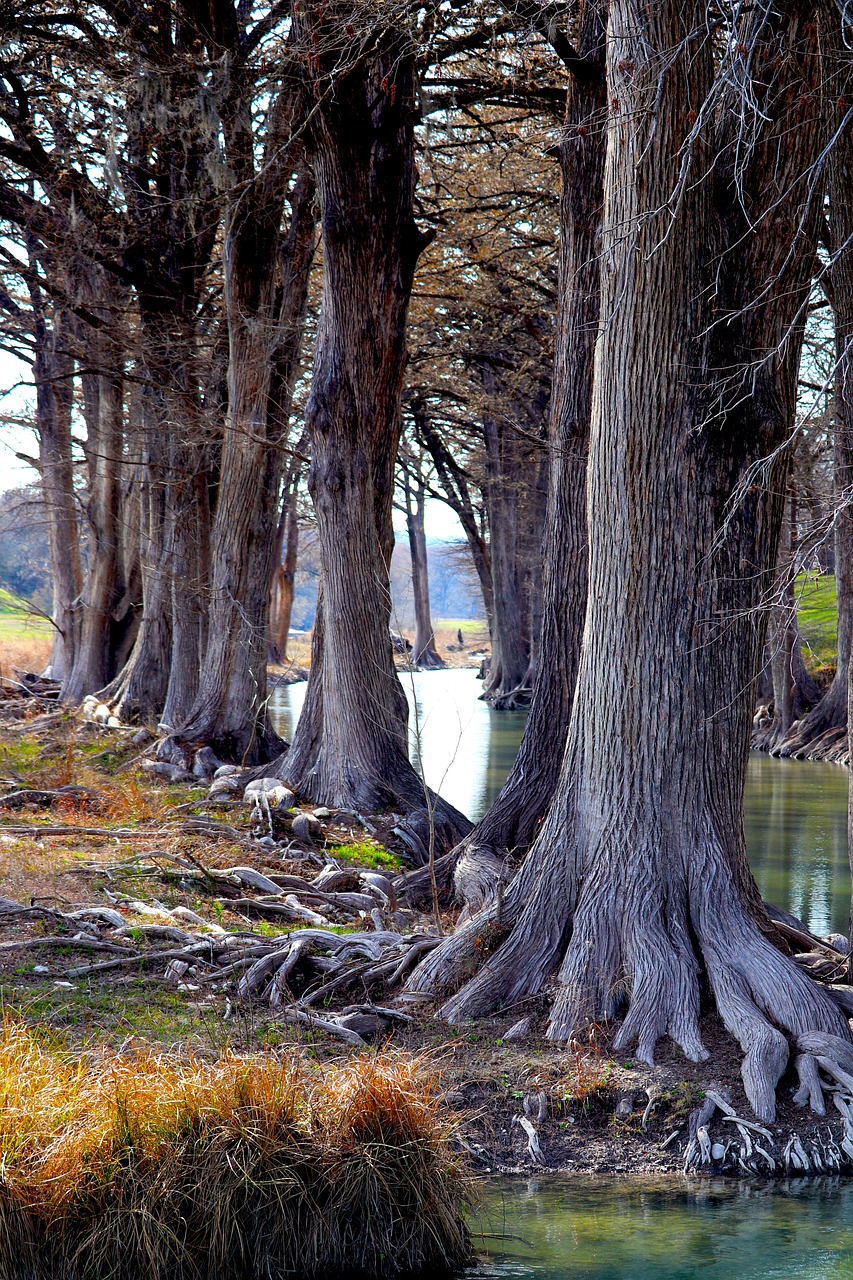Cypress trees can transform your garden overnight by providing instant height, privacy, and an aesthetic appeal. Their tall, slender form creates natural barriers while enhancing the overall look of your landscape. Additionally, their fast growth rate means you can enjoy these benefits in a short time.
Understanding Cypress Trees
Cypress trees belong to the family Cupressaceae. They are known for their resilience and adaptability in various climates. These evergreen trees are commonly found in wet areas but can thrive in different soil types. The distinctive shape and vibrant green foliage make them a popular choice for gardens.

One of the most appealing aspects of cypress trees is their rapid growth. Depending on the species, some cypress trees can grow up to three feet per year. This makes them an excellent option for gardeners looking for quick results. Moreover, cypress trees are low-maintenance, requiring minimal care once established.
Types of Cypress Trees
There are several species of cypress trees, each offering unique features suitable for different gardening needs. Understanding these varieties can help you choose the best type for your garden. Below are some popular types:
| Species | Height | Features |
|---|---|---|
| Montezuma Cypress | 70-100 ft | Tolerates wet conditions, creates a stunning focal point. |
| Bald Cypress | 50-70 ft | Unique knees in wet areas, excellent shade provider. |
| Italian Cypress | 30-40 ft | Narrow form, ideal for formal gardens and hedges. |
Using the right species can greatly enhance your garden’s design. For instance, the Italian Cypress is perfect for creating elegant lines and structure, while the Bald Cypress is more appropriate for wetter areas, adding a unique character with its knee formations.
The Benefits of Cypress Trees in Your Garden

Incorporating cypress trees can offer numerous advantages beyond aesthetic appeal. Here are some key benefits:
- Privacy: Their tall stature provides excellent screening from neighboring properties.
- Windbreaks: Cypress trees can serve as effective windbreaks, protecting other plants and outdoor spaces.
- Wildlife Habitat: These trees attract various wildlife, including birds and insects, contributing to biodiversity.
- Soil Erosion Control: Their root systems help stabilize soil and prevent erosion.
- Aesthetic Appeal: With their classic shape and lush foliage, they enhance the beauty of any landscape.
Whether you want to create a serene retreat or a vibrant garden space, cypress trees can play a pivotal role in achieving your vision. Their versatility allows them to fit into various garden designs seamlessly.
Planting and Care Tips

For optimal growth and health, proper planting and care practices are essential. Follow these tips to ensure your cypress trees thrive:
- Location: Choose a spot that receives full sun to partial shade.
- Soil Preparation: Ensure well-draining soil with adequate nutrients.
- Watering: Water regularly during the first year to establish strong roots.
- Pruning: Prune only as necessary to maintain shape and health.
By following these guidelines, you can enjoy the many benefits that cypress trees offer and watch your garden transform beautifully over time.
Creating Privacy Screens with Cypress Trees
Cypress trees are renowned for their ability to create effective privacy screens. Their tall and dense foliage can shield your garden from prying eyes, making your outdoor space feel more secluded. This feature is particularly beneficial for urban gardens or homes close to neighbors.
When planning a privacy screen with cypress trees, consider the following factors:
- Spacing: For a seamless privacy screen, plant cypress trees approximately 3 to 5 feet apart. This allows them to grow together and create a solid barrier.
- Height: Choose a species that grows tall enough to meet your privacy needs. For instance, the Bald Cypress can reach heights of 50-70 feet, providing ample privacy.
- Maintenance: Regularly monitor the trees for any signs of disease or pests. Healthy trees are crucial for maintaining an effective privacy screen.
By strategically planting cypress trees, you can create a natural wall that enhances your garden’s intimacy while also adding beauty and color throughout the year.
The Aesthetic Appeal of Cypress Trees
Cypress trees are not only functional but also add significant aesthetic value to any garden. Their unique forms and rich green foliage can complement various landscaping styles, from formal gardens to rustic retreats.
Designing with Cypress Trees
Here are some design ideas for incorporating cypress trees into your garden:
- Focal Points: Use a single, tall cypress tree as a focal point in your garden. Its height will draw the eye and create interest.
- Hedging: Plant a row of cypress trees along pathways or borders to create defined edges that guide visitors through your space.
- Layering: Combine cypress trees with other plants of varying heights. This layering effect adds depth and texture to your garden design.
The evergreen nature of cypress trees ensures that your garden remains vibrant year-round, providing color even during the winter months when many plants go dormant. Their lush foliage can also serve as a backdrop for flowering plants, enhancing the overall visual appeal.
Environmental Benefits of Cypress Trees
Beyond their beauty and functionality, cypress trees offer numerous environmental benefits that contribute to a healthier ecosystem. Here are some noteworthy advantages:
- Air Quality Improvement: Like all trees, cypress trees absorb carbon dioxide and release oxygen, improving air quality in your garden and surrounding areas.
- Wildlife Habitat: These trees provide shelter and food for various birds and small mammals. By planting cypress trees, you can create a welcoming environment for local wildlife.
- Erosion Control: The extensive root systems of cypress trees help stabilize soil, preventing erosion on slopes and near water bodies.
- Water Conservation: Cypress trees are known for their ability to absorb excess water, which can be beneficial in areas prone to flooding.
By choosing to plant cypress trees, you not only enhance your garden’s aesthetics but also contribute positively to the environment. Their ecological advantages make them an ideal choice for eco-conscious gardeners.
Cypress Trees and Seasonal Interest
Cypress trees provide year-round interest due to their changing foliage and unique characteristics across seasons. Understanding how they evolve throughout the year can help you appreciate their role in your garden design.
Seasonal Changes
The following are some seasonal highlights of cypress trees:
- Spring: New growth emerges with bright green foliage, creating a lively appearance as the garden awakens from winter.
- Summer: The dense canopy provides shade and coolness, making outdoor spaces more enjoyable during hot months.
- Autumn: Some species exhibit stunning fall colors, adding a warm palette to your landscape before winter sets in.
- Winter: Even in winter, their structure remains striking. The evergreen foliage provides continuity in an otherwise bare landscape.
This seasonal dynamism allows cypress trees to remain integral parts of your garden design throughout the year, enhancing its overall appeal in every season.

Enhancing Garden Design with Cypress Trees
Cypress trees can significantly enhance garden design by serving various aesthetic and functional purposes. Their unique shapes and sizes can complement different landscaping themes, making them versatile additions to any outdoor space.
Integrating Cypress Trees into Different Landscaping Styles
Whether you have a modern garden, a traditional landscape, or a naturalistic setting, cypress trees can fit seamlessly into your design. Here are some ideas for integrating them into various styles:
- Modern Gardens: In contemporary designs, consider using Italian Cypress for its tall, narrow form. Plant them in symmetrical rows to create clean lines that define spaces.
- Rustic Landscapes: For a more natural look, group several Bald Cypress trees together near water features or ponds. Their unique knees and broader trunks add character to rustic settings.
- Formal Gardens: Use cypress trees as hedges or vertical accents in formal gardens. Prune them to maintain neat shapes, such as spheres or cubes, for a structured appearance.
- Wildlife Gardens: Incorporate cypress trees into wildlife-friendly designs. Their dense foliage provides shelter for birds and small animals while offering food sources with their cones.
By tailoring the use of cypress trees to match your garden’s style, you can create a harmonious and visually appealing environment.
Creating Seasonal Displays with Cypress Trees
Cypress trees not only contribute to the overall structure of your garden but also allow you to create seasonal displays that change with the year. Here are some strategies to maximize their impact through the seasons:
Spring Displays
As cypress trees begin to leaf out in spring, they can serve as a backdrop for blooming flowers. Pair early bloomers such as tulips or daffodils at their base to create vibrant color contrasts against the fresh green foliage.
Summer Arrangements
In summer, the dense canopy of cypress trees offers shade for other plants. Consider planting ferns or shade-loving perennials beneath them. Their lush foliage creates a cool microclimate that can help these plants thrive.
Autumn Accents
During fall, some cypress species display beautiful autumn hues. Highlight this seasonal change by planting ornamental grasses nearby that sway gently in the breeze, enhancing the overall visual interest as leaves turn.
Winter Structure
In winter, when many plants are dormant, cypress trees maintain their striking shape. Use them as focal points in your winter landscape. You can even decorate them with lights or ornaments during the holiday season for added charm.
Cypress Trees and Their Role in Sustainable Gardening
As environmental awareness grows, many gardeners seek to incorporate sustainable practices into their landscaping. Cypress trees play an essential role in this approach due to their ecological benefits.
Water Management
Cypress trees are particularly effective in managing water because of their ability to thrive in wet conditions. By planting them near water features or in low-lying areas, you can enhance drainage and reduce runoff.
Soil Health
The presence of cypress trees contributes to improved soil health. Their leaf litter decomposes slowly, enriching the soil with organic matter and nutrients over time. This encourages beneficial microorganisms and promotes overall soil fertility.
Biodiversity Promotion
Cypress trees are known to attract various wildlife species, including birds, insects, and other animals. By planting them in your garden, you create habitats that support local biodiversity. This can lead to a more balanced ecosystem where natural pest control is enhanced.
Caring for Your Cypress Trees
To ensure that your cypress trees thrive and provide maximum benefits to your garden, proper care is crucial. Here are some tips for maintaining healthy cypress trees:
- Pest Management: Regularly check for pests such as aphids or spider mites. If detected, use organic pesticides or introduce beneficial insects like ladybugs.
- Mulching: Apply a layer of mulch around the base of the tree to conserve moisture and suppress weeds.
- Fertilizing: Use a balanced fertilizer in early spring to promote healthy growth. Ensure it is suitable for evergreen trees.
- Irrigation: While cypress trees are drought-tolerant once established, they benefit from regular watering during dry spells, especially in their first few years.
With proper care, your cypress trees will flourish, providing beauty and functionality to your garden for years to come.
Additional Considerations for Planting Cypress Trees
When deciding to incorporate cypress trees into your garden, it is essential to take into account several additional factors that will influence their growth and success in your landscape. Understanding these considerations can lead to a more fruitful gardening experience.
Choosing the Right Location
The location of your cypress trees plays a significant role in their health and growth. Evaluate your garden’s layout and consider the following aspects:
- Sunlight: Cypress trees generally prefer full sun but can tolerate partial shade. Ensure the chosen spot allows for adequate sunlight exposure throughout the day.
- Soil Type: While cypress trees are adaptable, they thrive in well-draining soil. Conduct a soil test to determine pH and nutrient levels, and amend as necessary before planting.
- Space: Ensure there is enough room for the mature size of the cypress trees you choose. Consider their height and spread to avoid overcrowding with other plants.
Potential Challenges
Like any plant, cypress trees can face challenges that may affect their growth. Being aware of these potential issues can help you take preventive measures:
- Diseases: Watch for signs of diseases such as root rot or needle blight. Proper watering and spacing can help reduce the risk.
- Pests: While generally resistant, some pests may still pose a threat. Regular inspections will help you catch infestations early.
- Climate Considerations: Different species of cypress trees have varying tolerances to climate conditions. Research which type is best suited for your specific area.
The Role of Cypress Trees in Landscape Design Trends
The popularity of cypress trees in landscape design continues to grow, as they align with current gardening trends emphasizing sustainability and natural beauty. Here are some ways they fit into modern design philosophies:
Sustainable Landscaping
Cypress trees contribute significantly to sustainable landscaping efforts. Their ability to manage water runoff and improve air quality aligns with eco-friendly practices. As more gardeners look to create environmentally responsible spaces, cypress trees serve as a natural solution.
Low-Maintenance Gardening
With their resilience and low maintenance requirements, cypress trees are ideal for gardeners seeking a beautiful landscape without extensive upkeep. Their hardiness allows them to flourish with minimal intervention, freeing up time for other gardening pursuits.
Natural Aesthetics
The organic shapes and rich textures of cypress trees appeal to those drawn to natural aesthetics. Their versatility allows them to blend seamlessly with various plantings, enhancing the overall beauty of gardens without compromising on style.
Final Thoughts
Cypress trees offer an array of benefits that can transform your garden into a stunning sanctuary. From their ability to provide privacy and shade to their contribution to environmental sustainability, these trees play a vital role in enhancing outdoor spaces. Their adaptability and aesthetic appeal make them suitable for a variety of garden styles, ensuring that they can fit beautifully into any landscape design.
With the right care and consideration for their placement, cypress trees can thrive, enriching your garden for years to come. Whether you are looking for a dramatic focal point or a serene backdrop, incorporating cypress trees can help you achieve your gardening goals while also promoting ecological health.
As you embark on your journey of transforming your garden with cypress trees, remember to appreciate the unique characteristics and seasonal changes they bring. Embrace the beauty and functionality of these majestic trees as they contribute to making your garden a true oasis.
